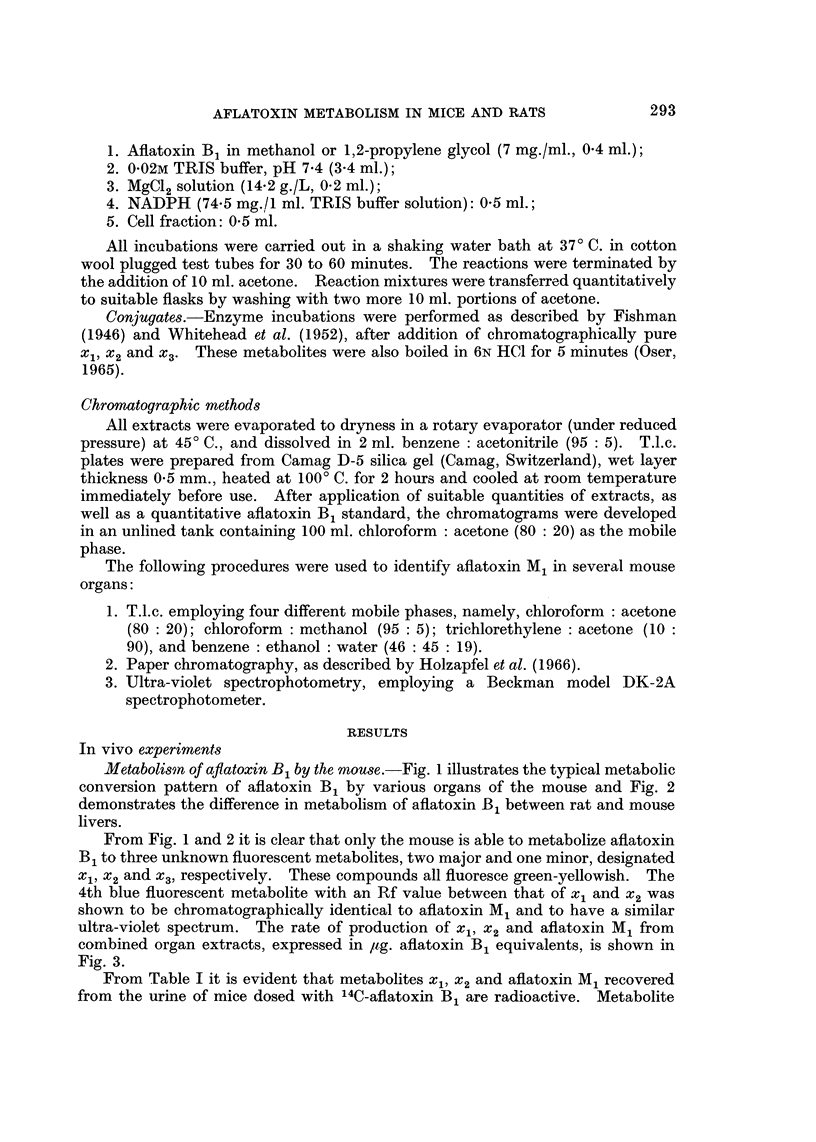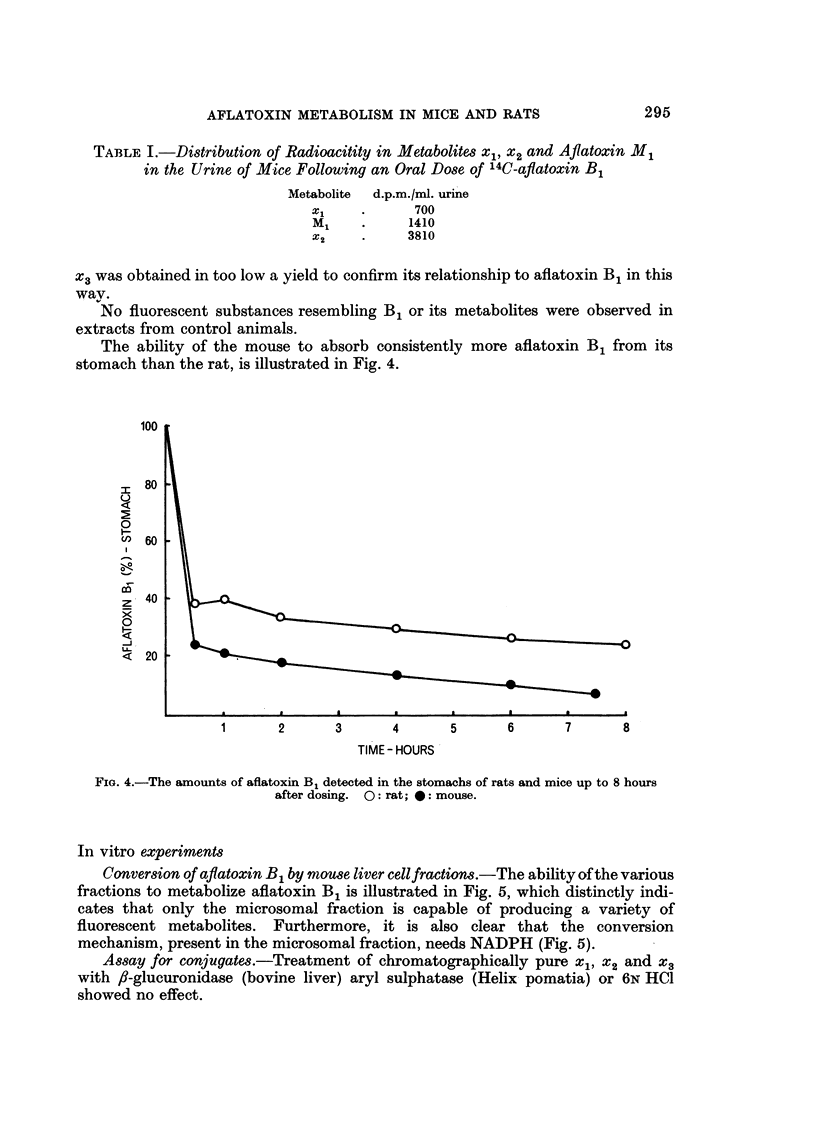Abstract
In vivo metabolic studies on rats and mice revealed a marked difference in the fluorescent compounds produced after ingestion of aflatoxin B1. The mouse converted aflatoxin B1 to three unknown fluorescent compounds, designated x1, x2 and x3 and the known aflatoxin M1, while the rat was only capable of producing aflatoxin M1. The results suggested that metabolites x1, x2, x3 and aflatoxin M1 were not part of a major metabolic pathway, but produced independently. These unknown yellowish-green fluorescent compounds did not seem to be conjugated with sulphate or glucuronic acid.
In vitro incubations of various mouse liver cell fractions with aflatoxin B1 showed that metabolites x1, x2, x3 and aflatoxin M1, could only be produced by the microsomal fraction and that NADPH was needed as a co-factor. The differences in aflatoxin metabolism by mice and rats are discussed in relation to the apparent resistance of the mouse to the carcinogenic effects of this toxin.
Full text
PDF






Selected References
These references are in PubMed. This may not be the complete list of references from this article.
- ADYE J., MATELES R. I. INCORPORATION OF LABELLED COMPOUNDS INTO AFLATOXINS. Biochim Biophys Acta. 1964 May 11;86:418–420. doi: 10.1016/0304-4165(64)90077-7. [DOI] [PubMed] [Google Scholar]
- BUTLER W. H. ACUTE TOXICITY OF AFLATOXIN B-1 IN RATS. Br J Cancer. 1964 Dec;18:756–762. doi: 10.1038/bjc.1964.87. [DOI] [PMC free article] [PubMed] [Google Scholar]
- Holzapfel C. W., Steyn P. S., Purchase I. F. Isolation and structure of aflatoxins M1 and M2. Tetrahedron Lett. 1966 Jun;25:2799–2803. doi: 10.1016/s0040-4039(01)99863-6. [DOI] [PubMed] [Google Scholar]
- LOWRY O. H., ROSEBROUGH N. J., FARR A. L., RANDALL R. J. Protein measurement with the Folin phenol reagent. J Biol Chem. 1951 Nov;193(1):265–275. [PubMed] [Google Scholar]
- Portman R. S., Plowman K. M., Campbell T. C. Aflatoxin metabolism by liver microsomal preparations of two different species. Biochem Biophys Res Commun. 1968 Dec 9;33(5):711–715. doi: 10.1016/0006-291x(68)90216-7. [DOI] [PubMed] [Google Scholar]
- Purchase I. F., Steyn M. The metabolism of aflatoxin B1 in rats. Br J Cancer. 1969 Dec;23(4):800–805. doi: 10.1038/bjc.1969.99. [DOI] [PMC free article] [PubMed] [Google Scholar]
- Schabort J. C., Steyn M. Substrate and phenobarbital inducible aflatoxin-4-hydroxylation and aflatoxin metabolism by rat liver microsomes. Biochem Pharmacol. 1969 Sep;18(9):2241–2252. doi: 10.1016/0006-2952(69)90331-1. [DOI] [PubMed] [Google Scholar]
- Wogan G. N. Chemical nature and biological effects of the aflatoxins. Bacteriol Rev. 1966 Jun;30(2):460–470. doi: 10.1128/br.30.2.460-470.1966. [DOI] [PMC free article] [PubMed] [Google Scholar]


